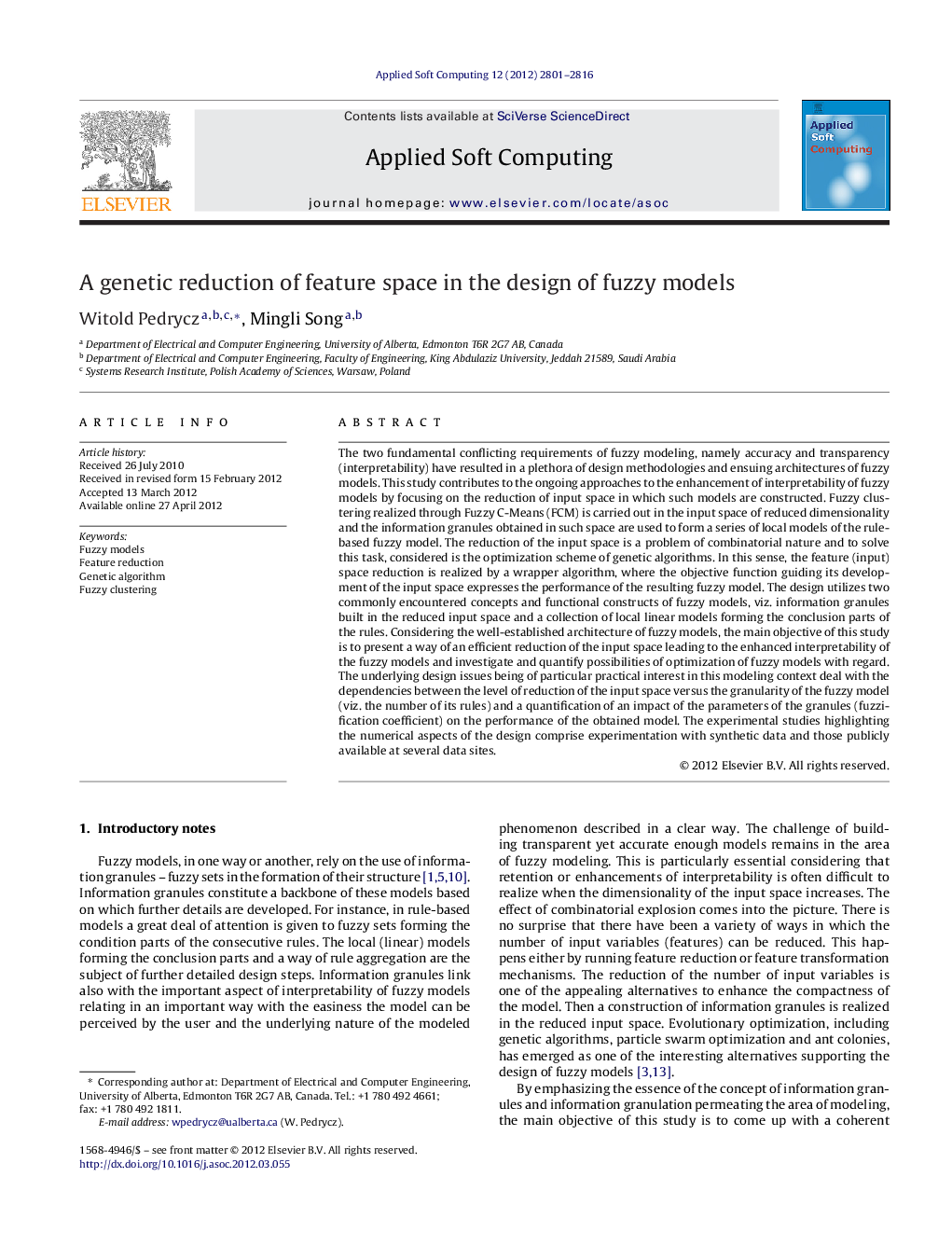| کد مقاله | کد نشریه | سال انتشار | مقاله انگلیسی | نسخه تمام متن |
|---|---|---|---|---|
| 496559 | 862864 | 2012 | 16 صفحه PDF | دانلود رایگان |

The two fundamental conflicting requirements of fuzzy modeling, namely accuracy and transparency (interpretability) have resulted in a plethora of design methodologies and ensuing architectures of fuzzy models. This study contributes to the ongoing approaches to the enhancement of interpretability of fuzzy models by focusing on the reduction of input space in which such models are constructed. Fuzzy clustering realized through Fuzzy C-Means (FCM) is carried out in the input space of reduced dimensionality and the information granules obtained in such space are used to form a series of local models of the rule-based fuzzy model. The reduction of the input space is a problem of combinatorial nature and to solve this task, considered is the optimization scheme of genetic algorithms. In this sense, the feature (input) space reduction is realized by a wrapper algorithm, where the objective function guiding its development of the input space expresses the performance of the resulting fuzzy model. The design utilizes two commonly encountered concepts and functional constructs of fuzzy models, viz. information granules built in the reduced input space and a collection of local linear models forming the conclusion parts of the rules. Considering the well-established architecture of fuzzy models, the main objective of this study is to present a way of an efficient reduction of the input space leading to the enhanced interpretability of the fuzzy models and investigate and quantify possibilities of optimization of fuzzy models with regard. The underlying design issues being of particular practical interest in this modeling context deal with the dependencies between the level of reduction of the input space versus the granularity of the fuzzy model (viz. the number of its rules) and a quantification of an impact of the parameters of the granules (fuzzification coefficient) on the performance of the obtained model. The experimental studies highlighting the numerical aspects of the design comprise experimentation with synthetic data and those publicly available at several data sites.
Figure optionsDownload as PowerPoint slideHighlights
► Reduction of feature space is presented.
► Genetic algorithm is used in optimization.
► The wrapper scheme is used.
► Granularity of the model is investigated.
Journal: Applied Soft Computing - Volume 12, Issue 9, September 2012, Pages 2801–2816